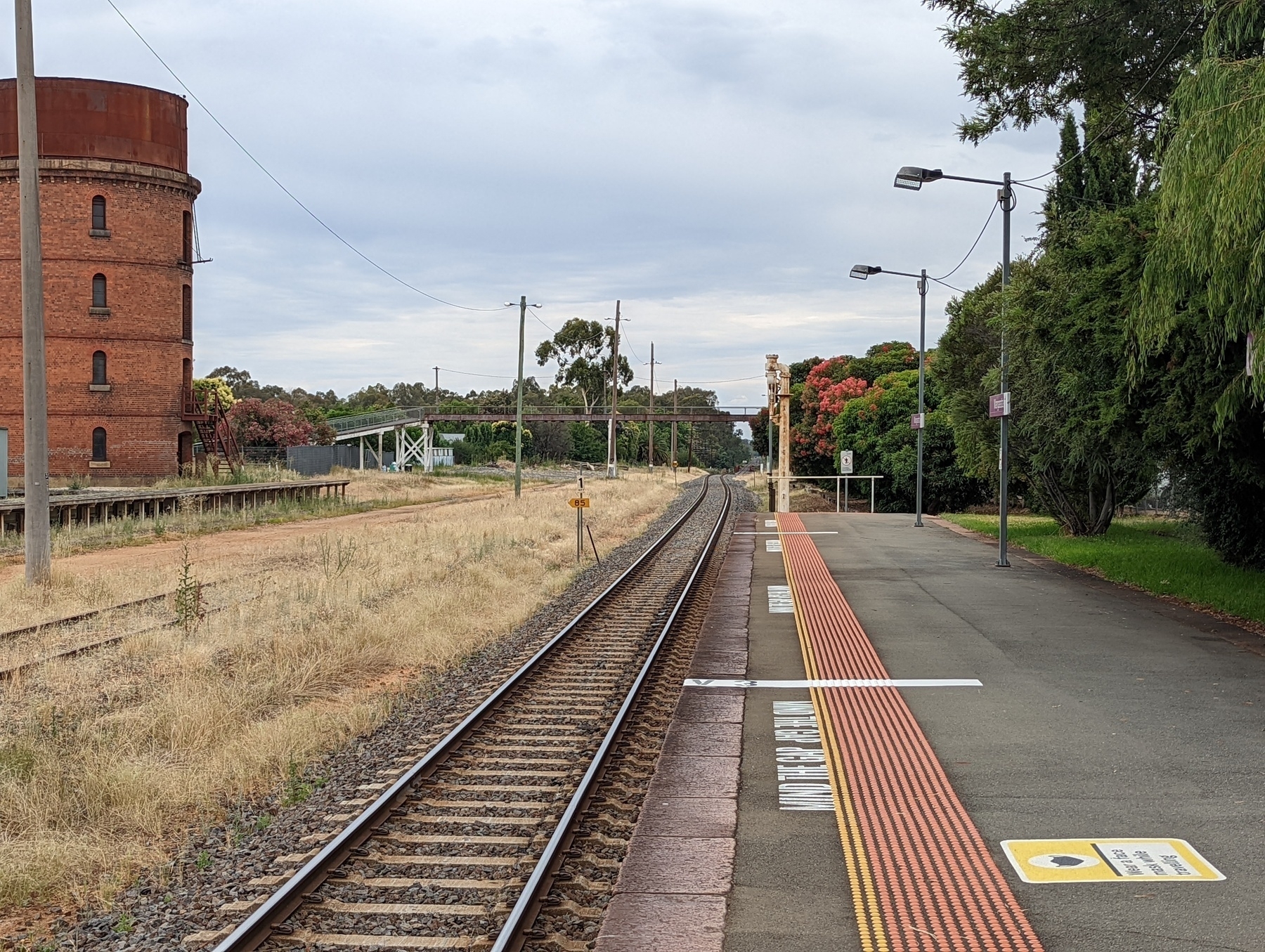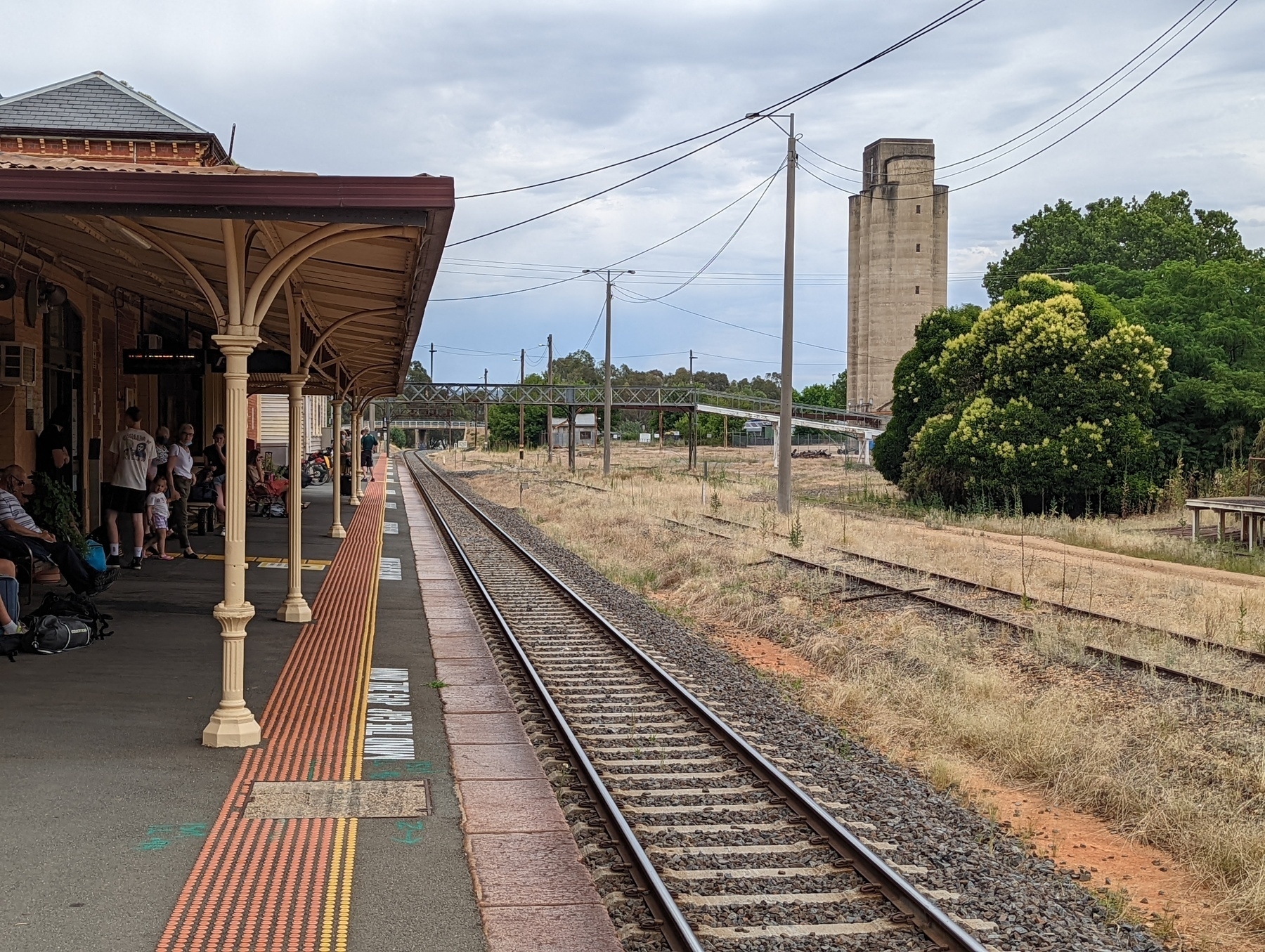-
It might be time to unsubscribe from developer related podcasts that talk about new technologies and platforms. It’s stressful seeing all these services being discussed, and thinking to yourself “I should check that out”, even when you know there’s nothing forcing you to do so.
-
My face is getting sore with all the palm prints on it. 🤦
-
Bocce in Fitzroy Gardens. Grand final for the 2021 season (yes, my friends and I came up with the idea of grand finals for our little casual comp 😏).

-
It’s a shame that there’s a non-insignificant number of people and companies that I admire and appreciate for their contribution to tech, while at the same time I personally would want nothing to do with.
-
While poking around the Micro.blog XML-RPC documentation, I had a flashback about SOAP. I had some limited experience with SOAP and it was always a huge pain. Looking back on it now, it’s striking how much was touted about SOAP middleware, as if that was what anyone using SOAP cared about.
I’m glad SOAP has been replaced by simpler technologies like REST. Simplicity eventually wins out in the end. I guess that’s why XML-RPC is still around.
-
PGBC Scoring Rules
I get a bit of a thrill when there’s a need to design a mini-language. I have one facing me now for a little project I’m responsible for, which is maintaining a scoring site for a bocce comp I’m involve in with friends. How scoring works now is that the winner of a particular bocce match gets one point for the season. The winner for the season is the person with the most points. Continue reading →
-
🔗 Wordle and IP law: What happens when a hot game gets cloned
I guess the moral of the story is that you might have the legal right to do something like clone a game, but there’s no guarantee that you’ll get off looking honourable doing so.
-
Wordle 208 6/6
⬜🟨⬜⬜⬜
⬜🟨⬜⬜⬜
⬜🟨⬜🟨⬜
⬜⬜🟨⬜🟨
🟩⬜⬜🟩⬜
🟩🟩🟩🟩🟩Was close to missing it today. The winning guess was a bit of a fluke.
-
On the Moxie Marlinspike Post About web3
Today, I took a look at the Moxie Marlinspike post about web31. I found this post interesting for a variety of reasons, not least because unlike many other posts on the subject, it was a post that was level-headed and was coming from a position of want to learn more rather than persuade (or hustle). Well worth the read, especially for those that are turned off by the whole web3 crap like I am. Continue reading →
-
Burnt Out on Design
I’ve been doing a heap of design work at my job at the moment; writing documents, drawing up architecture diagrams, etc. I’d thought I would like this sort of work but I realise now that I can only tolerate it in small doses. Doing it for as long as I have been is burning me out slightly. I’d just like to go back to coding. I’m wondering why this is. I think the biggest feeling I have is that it feels like I’m not delivering value. Continue reading →
-
I’ve been listening to, and buying, a fair bit of music from Anders Enger Jensen over the last few days. My current earworm is about half the tracks on Retro Grooves Volume 2. Some pretty good retro synth music there. 🎵
-
One of the domains for a blog that I’ve since abandoned is coming up for renewal in a few days. Might be a good as time as any to shut it down.
-
The latest episode of Core Intuition (496) resonated with me, especially the discussion about settling and sharing creative works near the end. I know this is something that I personally struggle with and would like to get better at this year.
-
I think I’ve settled on my word for 2022: finisher. Someone who finishes what he starts. This is something that I’m not super good at. I find it easy to start, but I rarely follow through all the way. It’s not in the list of words but I think it’s a good one to go for.
-
🔗 The Algorithmic Ad Monster Cometh for Podcasts
I’m starting to hear more of these types of ads in the shows I follow, and I despise them. I agree with the statement of the ads being part of the product. I tend to listen to host-read ads. I definitely skip the automated ones.
-
It’s interesting to see the technical knowledge and priorities of a software development team come through in the product they work on. Case in point: the syntax highlighting options for a code block in Confluence include ColdFusion, Delphi, Java FX, Groovy and Scala; but not Go.
-
Yet another reminder to myself to write things down when they come to me. I had the perfect word for a post, but when it came time to write it I couldn’t recall what that word was. I know that I know it; I was turning it over in my head a few days ago. Should’ve written it down.
-
There’s a lot I don’t like about all the “web3” stuff going on: bad actors and environmental impact being on the top of the list. But even if this is set aside, it just doesn’t sound like an appealing way to spend my time. As far as I can tell, it’s just a bunch of projects and people doing the exact same thing seen on the web before, but with an extra layer of trading, hustling, fundraising, etc. completely driven by personal interests. It all seems so distasteful, and even a little boring.
-
I’m adding some photos to last year’s journal in preparation for turning it into a book. I’m honestly trying to avoid rushing it and just saying “ah, that’s enough”. Any effort spent now will be paid back in kind once the book is printed and I’m looking through it years later.
I’m also glad that I’ve made Feed Journaler to import blog posts. Looking at the posts made earlier in the year, I can see that many are missing, most likely because they contain images that were not imported. I’ll need to import these manually.
-
We haven’t had any decent rain for several weeks now. So with the Bureau predicting rain today, I’m looking outside and at the rain radar like a roulette player waiting for the wheel to stop spinning.
-
🔗 Microsoft fixes harebrained Y2K22 Exchange bug that disrupted email worldwide
Dates are hard, but it seems to me that treating the first two digits of a signed integer as the year when it’s so close to the overflow value is just asking for trouble.
-
Back at work today, conceptually if not physically. The hardest part of coming back to work after some time off is the feeling that you never actually had any time off.
-
That silly maxination countdown site is live again as I’ve just booked my Covid-19 booster shot.
-
Wangaratta station. Took a V/Line train back to the city after helping someone with the drive to Canberra.


-
Happy new year. Time for the change of calendar.
